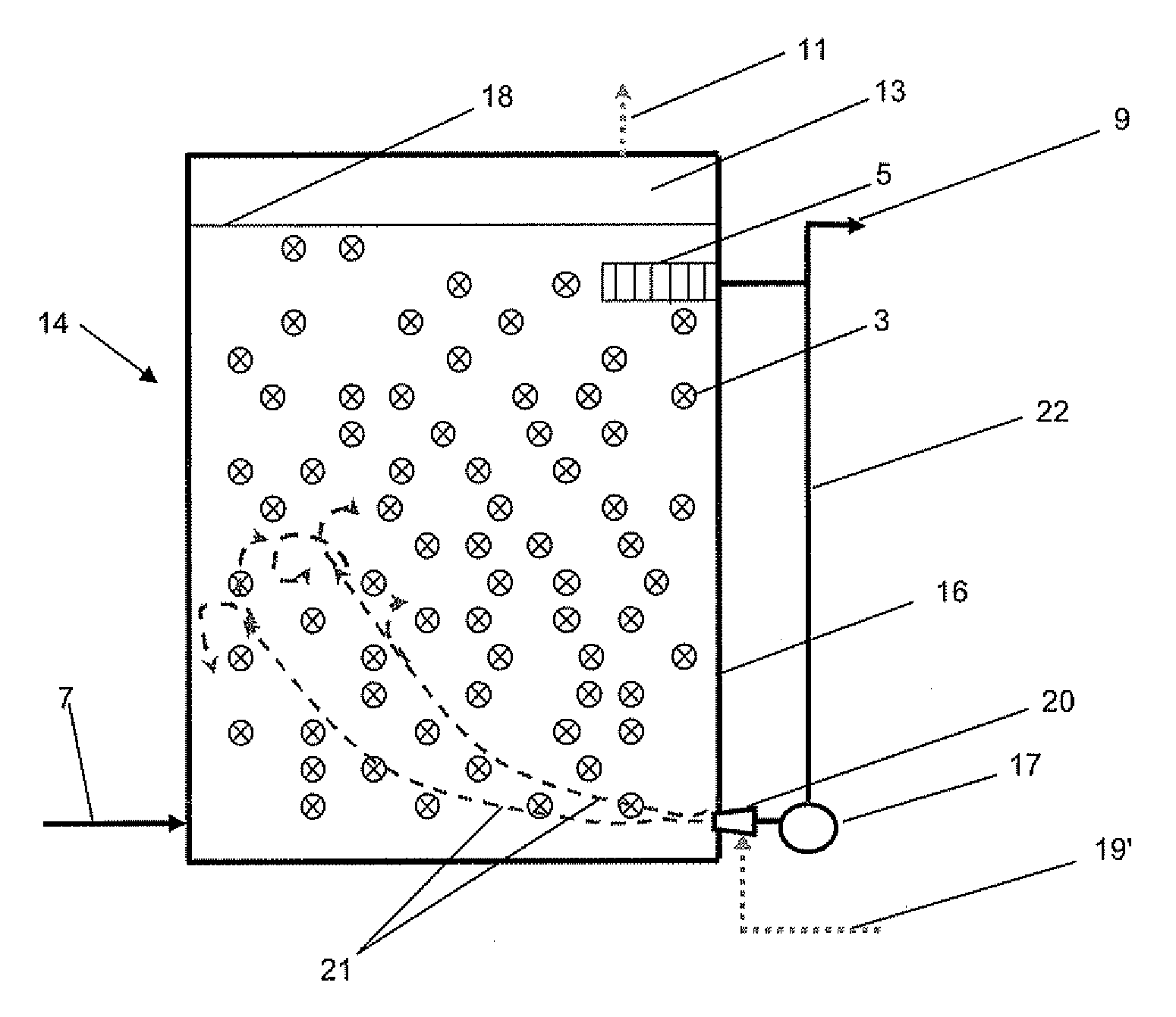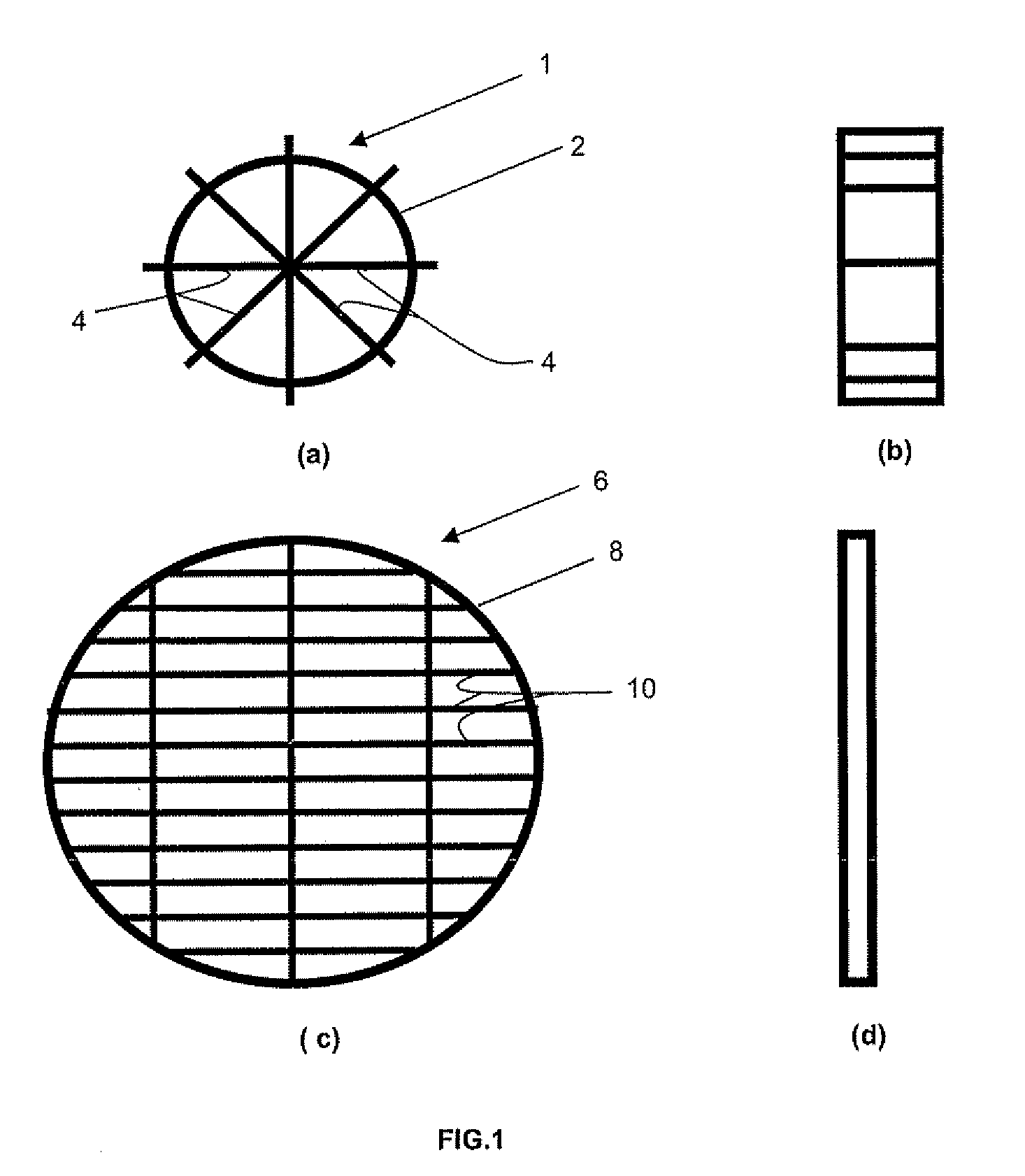Moving bed biofilm reactor (MBBR) system for conversion of syngas components to liquid products
- Summary
- Abstract
- Description
- Claims
- Application Information
AI Technical Summary
Benefits of technology
Problems solved by technology
Method used
Image
Examples
example
[0034]A 36 m3 fermentor in the form of a fermentation vessel having a 1.5 meter diameter and a 20 meter wetted depth is used as a MBBR for the conversion of carbon monoxide and hydrogen into ethanol. The fermentor is filled approximately 50% of the liquid working volume with AnoxKaldnes K1 media. A gas of about 40% CO, 30% H2, and 30% CO2 is fed to the vessel at 3.5 m3 per minute and 3 bar absolute inlet pressure and the residual gas exits the module at less than 0.1 bar outlet pressure. This gas flow is added to a slot aeration / gas transfer device operated at a liquid recycle flow rate of 400 liters per minute. The fermentation medium having the composition given in Table 2 is used to fill the fermentor and maintained at about 37° C. The fermentor is maintained under anaerobic conditions.
[0035]The fresh fermentation medium contains the components listed in Tables 2 & 3(a)-(d). Initially, the bioreactor system is operated in the batch mode and inoculated with 2000 liters of an activ...
PUM
 Login to View More
Login to View More Abstract
Description
Claims
Application Information
 Login to View More
Login to View More - R&D
- Intellectual Property
- Life Sciences
- Materials
- Tech Scout
- Unparalleled Data Quality
- Higher Quality Content
- 60% Fewer Hallucinations
Browse by: Latest US Patents, China's latest patents, Technical Efficacy Thesaurus, Application Domain, Technology Topic, Popular Technical Reports.
© 2025 PatSnap. All rights reserved.Legal|Privacy policy|Modern Slavery Act Transparency Statement|Sitemap|About US| Contact US: help@patsnap.com



